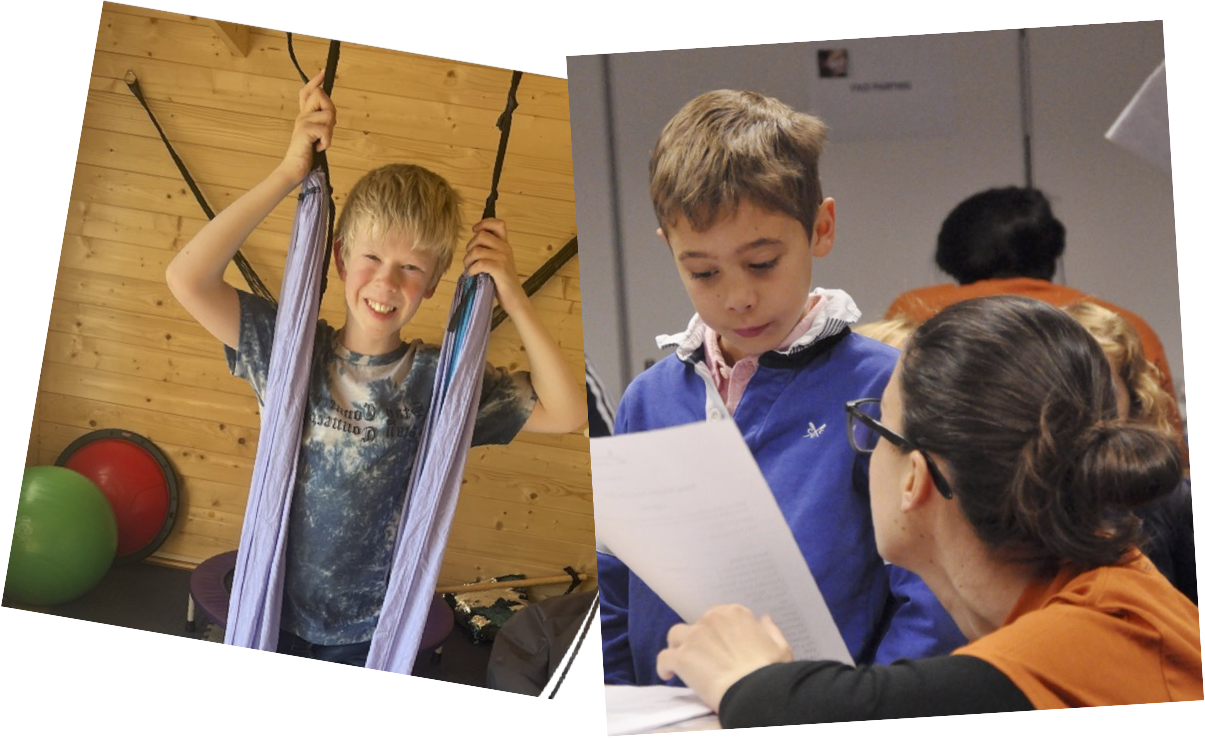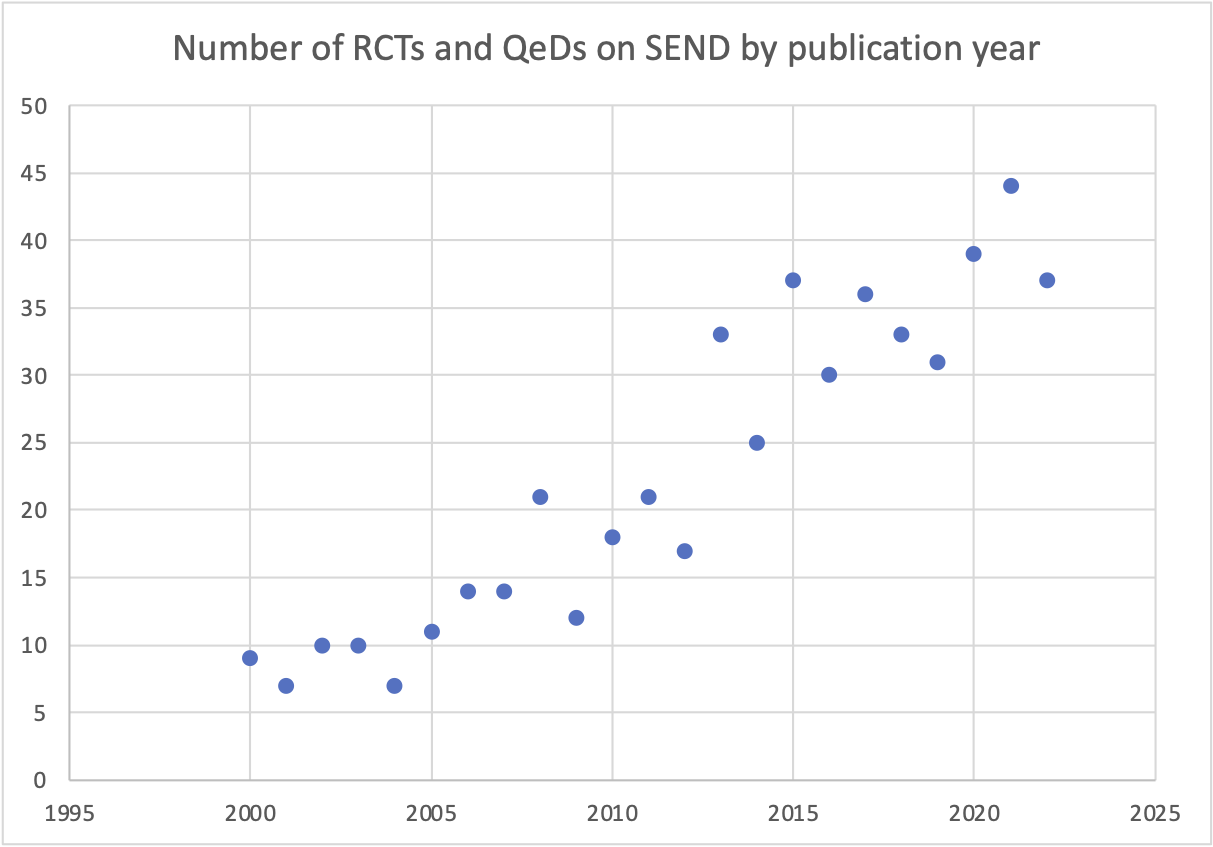
In this article, Professor Jo van Herwegen and her team give an update on the latest findings from the MetaSENse project which is revisiting the evidence base for effective interventions for students with Special Educational Needs and Disabilities (SEND).
Background of the wider MetaSENse project
The number of pupils identified with Special Educational Needs and Disabilities (SEND) continues to rise (DfE, 2021). Educational outcomes for those with SEND are often lower compared to those without SEND and this gap has become larger since 2020. This is likely due to the COVID-19 pandemic (Tuckett et al., 2022) and highlights the disparities for this population. Thus, it is important for parents, educators, specialist professionals and policymakers to understand the best evidence-based practice to raise educational outcomes in pupils with SEND.
The CEN’s MetaSENse[1] study, funded by the Nuffield Foundation, is synthesising evidence of what remediations work across different pupils with SEND aged 4 to 25. Technically, the project is focusing on “manualised” (i.e., has a published and accessible manual) targeted intervention approaches (either Tier 2 or Tier 3) that go beyond good quality teaching. Tier 2 interventions are often provided in small-group sessions in the classroom during independent work or during times that do not conflict with other critical content areas. Tier 3 provides intensive intervention sessions for individual students with more significant needs or whose needs are not sufficiently met by Tier 2 supports.
In phase 1 of the project, the team is carrying out a systematic review of the empirical literature, followed by a meta-analysis of the data. In addition to analysing of the quality of the evidence base, this meta-analysis will, for the first time, inform which Tier 2 and Tier 3 manualised interventions work best (that is, have largest effect sizes) in relation to different phases of education (preschool, primary, secondary, post-16), and in different educational contexts (special vs mainstream). And this is being done for each category of SEND needs. In phase 2, the team is using in-depth interviews with educational professionals to identify the barriers they face in implementing the most effective practices indicated by the aforementioned evidence.
The project will have a practical outcome: we will produce a toolkit featuring a database that can inform practitioners about the evidence-base underpinning different interventions for pupils with SEND, and which interventions to select in different contexts according to pupils’ needs. This will allow parents, educators, specialist professionals and policymakers to make evidence-informed decisions about how to raise educational outcomes for those with SEND in cost-effective ways. By the same token, it will inform the future research agenda of academics and relevant funders.
Update on our findings: the number of RCTs and QeDs included in MetaSENse
Randomised Control Trials (RCTs) are seen as the ‘gold standard’ way of evaluating what works. In RCTs participants are randomly assigned to one of two groups: the experimental group receiving the intervention or the control group which either receives the business-as-usual support in the classroom or another type of activity (named active control trial) that is not of interest.
Quasi-experimental designs (QeDs) are studies in which two groups of subjects are matched based on one or more characteristics and one group receives the intervention, whilst the other does not and receives either business as usual or an active control intervention. The difference with RCTs is that in QEDs the groups are not randomly allocated.
Together, these two types of study form the best kind of evidence that tell us how effective interventions for SEND are, in what populations and in what contexts.
In our systematic review, we began by collating all the research papers that reported the outcome of evaluating interventions to improve educational abilities in children with SEND. Using our pre-registered search protocol, we identified 55,564 records for title and abstract, which we then screened to evaluate their relevance. We then screened 4323 full texts, as well as full texts from clearing houses, organisations which write composite reports of evidence. From this set, we identified 533 records of studies that meet our inclusion criteria for the systematic review: over 500 studies to review! This initial work demonstrates that there are now a large number of studies that have examined Tier 2 and Tier 3 manualised interventions to improve educational outcomes for those with SEND.
How did we decide which studies to consider? The studies we considered were all published between 1st of January 2000 and 27/02/2023. We only included RCTs and QeDs that were published in peer-reviewed journals or dedicated websites of clearing houses and charities. Student dissertations held by universities were not included. Studies had to include a manualised intervention and report at least one educational outcome related to maths, reading, writing, science or overall attainment. We only included studies that focused on individuals with an existing diagnosis, or if the study screened for a diagnosis using normed assessments. Studies that only included students at risk for SEND based on teacher report or general attainment outcomes were not included, because this might target a much more heterogeneous population. Finally, studies could be completed in any country as long as the text was available in English.
What have we found so far? As can be seen from Figure 1 below, there has been a steady increase in the number of studies that have evaluated which interventions work to improve educational outcomes for students with SEND. Despite the steady increase in study numbers, it is important to note that this represents research globally.
The next step is to extract findings from these studies and use statistics to characterise the overall patterns – an analysis of the analyses, otherwise known as a meta-analysis. We have only completed data extraction for 25% of all studies and so far, have identified relatively few studies that have been carried out in the UK. In addition, the number of RCTs and QeDs alone does not yet tell us anything about the quality of the evidence and whether this has improved over time. So, with data extraction and quality analysis of more than 350 studies still to go… watch this space!
Our interim finding, however, is that there is an encouraging increase over time in the number of studies applying the best evidence-based approaches to evaluating the effectiveness of educational interventions for children with SEND.
Figure 1. Number of studies per publication year for MetaSENse: All studies include RCTs or QeDs related to improving educational outcomes for those with Special Educational Needs and Disabilities.

More about MetaSENse
You can find out more about the MetaSENse study and research team here: MetaSENse
The metaSENse study is funded by the Nuffield Foundation: The Nuffield Foundation is an independent charitable trust with a mission to advance social well-being. It funds research that informs social policy, primarily in Education, Welfare, and Justice. It also funds student programmes that provide opportunities for young people to develop skills in quantitative and scientific methods. The Nuffield Foundation is the founder and co-funder of the Nuffield Council on Bioethics, the Ada Lovelace Institute and the Nuffield Family Justice Observatory. The Foundation has funded this project, but the views expressed are those of the authors and not necessarily the Foundation. Visit www.nuffieldfoundation.org
[1] Raising educational outcomes for pupils with SEN and disabilities (MetaSENse)
References
DfE, June 2021: https://explore-education-statistics.service.gov.uk/find-statistics/special-educational-needs-in-england#releaseHeadlines-dataBlock-tables
Tuckett, S. et al., (2022). COVID-19 and Disadvantage Gaps in England 2021. Education Policy Institute, https://epi.org.uk/
